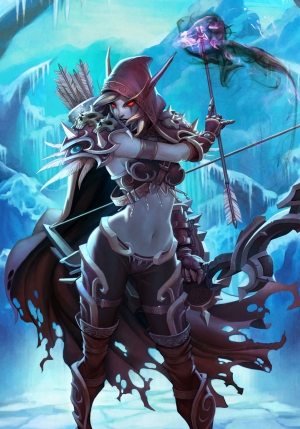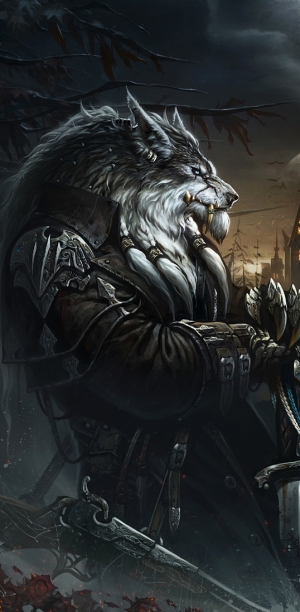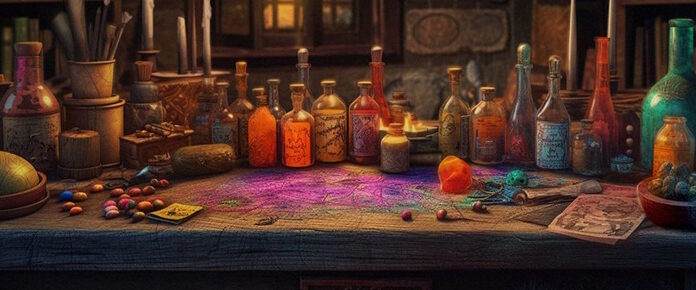
I sometimes get asked why I don’t do more stuff within betas when I have access to them. To answer that, all I can really do is point to the experience of the Broken Shore scenario and the cinematics that follow. I had somehow managed to remain totally isolated from some of the story revelations therein, and as a result, they also wound up affecting me in a way that you can only be affected with a decade of history behind certain interactions. You get so accustomed to characters and lineups being static, and then.. well, this happens.
Yes, World of Warcraft now has its Demon Hunters and its first stages of the Legion’s invasion live, and they’ve been delivered with panache and power — far more so than was the case in Warlords of Draenor, to boot. So let’s talk a bit about these events and the lore swirling around them… and why this works so well when its predecessor really, really didn’t.
The passing of the torches
I’m kind of torn about what took place with the leadership of both factions in the pre-expansion stuff here. Varian Wrynn’s fate has been well-known for quite some time, but the changes wrought upon the Horde were a bit more subtle and less immediately visible… and for good reason. But they’re also pretty major spoilers, so if you haven’t yet done the Broken Shore scenario or seen the cinematics post-Demon Hunter experience, I’ll hide them behind spoiler cuts.
Of course, you can also just read if you don’t care about spoilers. I don’t judge.
For the Horde... (click to reveal spoiler text) I’m really torn on what took place with the Horde leadership because on the one hand, I love it. I’ve always loved Sylvanas as a character because she’s really been effectively set up as someone who works with the Horde rather than for the Horde since the beginning. At the same time, Sylvanas also realizes how much she relies upon the Horde; she cannot effectively remain ruler without the Horde’s power structure. She makes a decision in the heat of battle, and it’s the right one, and it’s also one that reads like a betrayal to the Alliance even when it’s in fact the same conclusion they both would have reached if they had all of the information.
I’m really torn on what took place with the Horde leadership because on the one hand, I love it. I’ve always loved Sylvanas as a character because she’s really been effectively set up as someone who works with the Horde rather than for the Horde since the beginning. At the same time, Sylvanas also realizes how much she relies upon the Horde; she cannot effectively remain ruler without the Horde’s power structure. She makes a decision in the heat of battle, and it’s the right one, and it’s also one that reads like a betrayal to the Alliance even when it’s in fact the same conclusion they both would have reached if they had all of the information.
This is something the game has long missed, an actual reason for the factions to fight one another even in the midst of bigger conflicts. There was no way to communicate two entirely suitable decisions, and the result makes the distrust run deeper even as both sides reached the same conclusions. And I totally understand why the Horde would be saving face on its lost Warchief, trying hard to not show how mercurial its leadership has been over the past few years.
At the same time, I don’t like how Vol’jin only had one expansion in charge before he died. Vol’jin had been set up for several years as an interesting character, someone wholly dedicated to the Horde as an organization without necessarily being dedicated to a person. His loyalty to Thrall was more easily left behind when it came time to question Garrosh, and he had an interestingly devious streak; he could appreciate Sylvanas and Baine for their individual qualities, but he was not entirely given to either of their viewpoints. That’s all out the window now, and we never got to see what Vol’jin’s Horde would actually look like, compared to Thrall’s Horde or Garrosh’s Horde.
I feel like he got shortchanged, overall. But I do like having Sylvanas in the big chair.
I’ve been looking for more stuff for the Worgen to do for years, and I love that Varian’s death really opens up that opportunity. Genn is a fascinating character, and the interesting thing is that in a way, he’s as much of an opportunist as Sylvanas has ever been; he had no use for the Alliance for the longest time, and he’s kind of using a backdoor to be more important now. There’s some room to be a bit concerned about Worgen in the Alliance, in other words.
Varian’s actual death feels rather perfunctory, although it’s well-handled. He gets a heroic death, but not one that’s ambiguous or gives him a chance to heal any long-standing rifts. It’s the fall of a king, but he gets to be heroic without really being much of a hero. That’s to my tastes, and it gives the Alliance some legitimate internal conflict, which it has long needed.
I’m not happy with Jaina increasingly holding the villain ball, though. Come on, there’s other stuff for her to do, darn it.
Yeah, I have strong feelings about characters in this world after all. Is it really that surprising?
Why this works
 I’ve never been very fond of the opening experience in Warlords. And yet it’s very clear that this experience has inherited most of that, for better or for worse. So why does this one strike me as so much better? It’s not because I can skip this once I’ve done it the one time; I genuinely like the Broken Shore experience and genuinely dislike the opening invasion in Tanaan Jungle.
I’ve never been very fond of the opening experience in Warlords. And yet it’s very clear that this experience has inherited most of that, for better or for worse. So why does this one strike me as so much better? It’s not because I can skip this once I’ve done it the one time; I genuinely like the Broken Shore experience and genuinely dislike the opening invasion in Tanaan Jungle.
Part of it is just a matter of brevity; the Broken Shore feels punchy and high-energy, while the opening experience in Tanaan has always felt drawn-out to me. Another part is mechanics lining up with the storyline. In Tanaan, we’re told that we may not be able to come back to Azeroth for quite some time, but that’s never been the case; in the Broken Shore, we’re retreating and falling back, which seems like a logical response to the situation.
But a lot of it comes down to the simple plausibility of the threat. The Burning Legion feels like a huge threat, and when we’re faced with the Broken Shore, that actually is made manifest. Far from being told that we’re facing something enormous without feeling it, we feel as if there’s something enormous facing us, something we can scarce comprehend. The Iron Horde always felt like a weak threat that we were treating with deadly seriousness, something that we had to be told repeatedly was a huge threat to our world… without ever feeling like a huge threat to our world — especially when we stop the Dark Portal in the opening experience and then spend the rest of the expansion jollystomping the Iron Horde. It’s not even funny any longer; it’s just sad. We solve the big problem right away, facing nothing more than vague threats, watching big names pop up and then vanish without doing more than shrugging in their general direction.
The Broken Shore feels like a loss. Tanaan Jungle felt like a pointless preamble. There was no real sense of danger; at worst, we were stranded behind enemy lines, but we always knew there was a path back. Far from establishing a foothold in a dangerous space, it felt like just another version of a place we already conquered. But I like feeling that we’re actually trying to have a foothold and failing at it. And that’s something borne out by later quests. This is a much more tenuous position for everyone, and I like that.
Feedback, as always, is welcome down in the comments or via mail to eliot@massivelyop.com. Next time around, I’ll dive more into the meat of the Legion invasions and such.
 War never changes, but World of Warcraft does, with a decade of history and a huge footprint in the MMORPG industry. Join Eliot Lefebvre each week for a new installment of WoW Factor as he examines the enormous MMO, how it interacts with the larger world of online gaming, and what’s new in the worlds of Azeroth and Draenor.
War never changes, but World of Warcraft does, with a decade of history and a huge footprint in the MMORPG industry. Join Eliot Lefebvre each week for a new installment of WoW Factor as he examines the enormous MMO, how it interacts with the larger world of online gaming, and what’s new in the worlds of Azeroth and Draenor.














